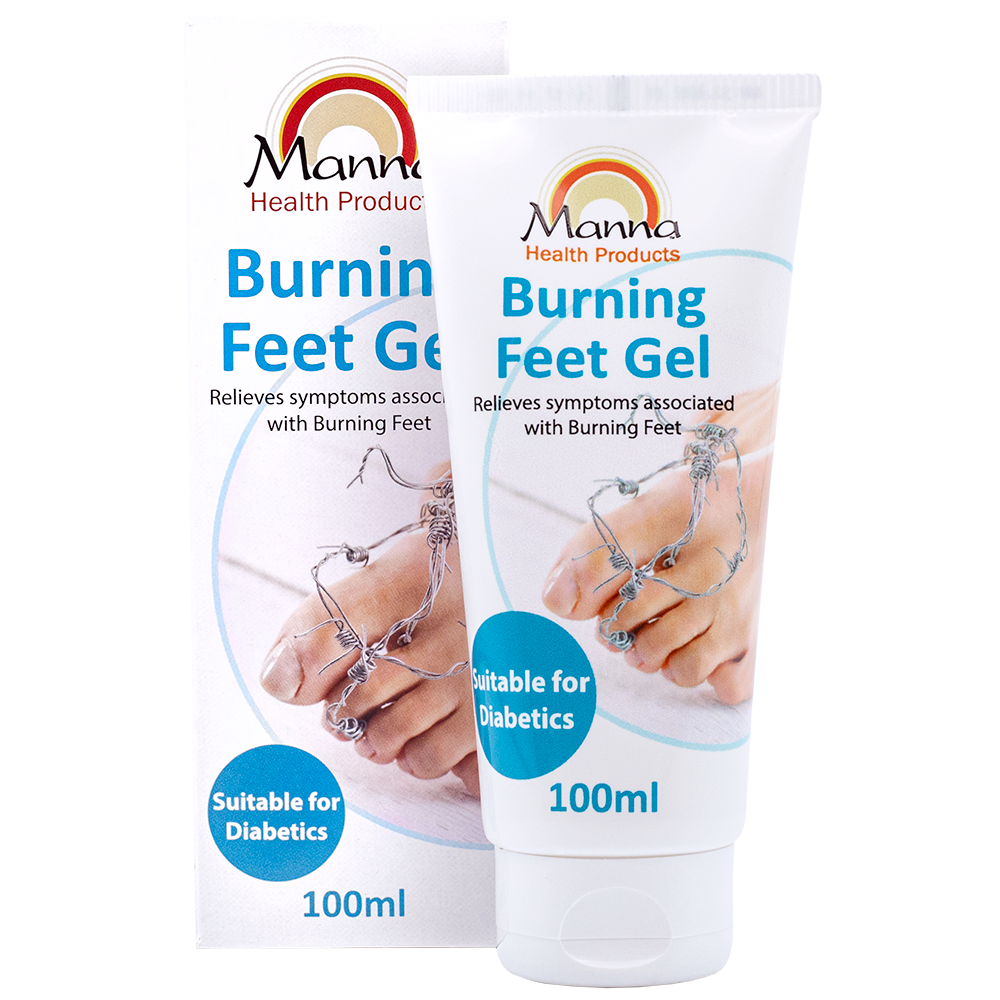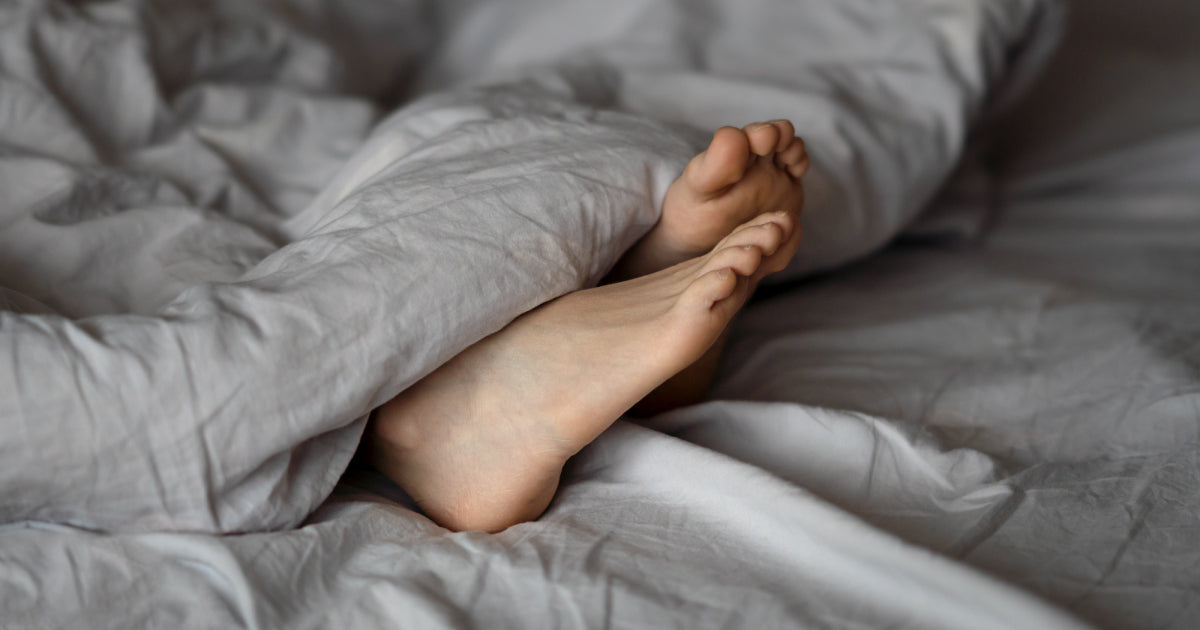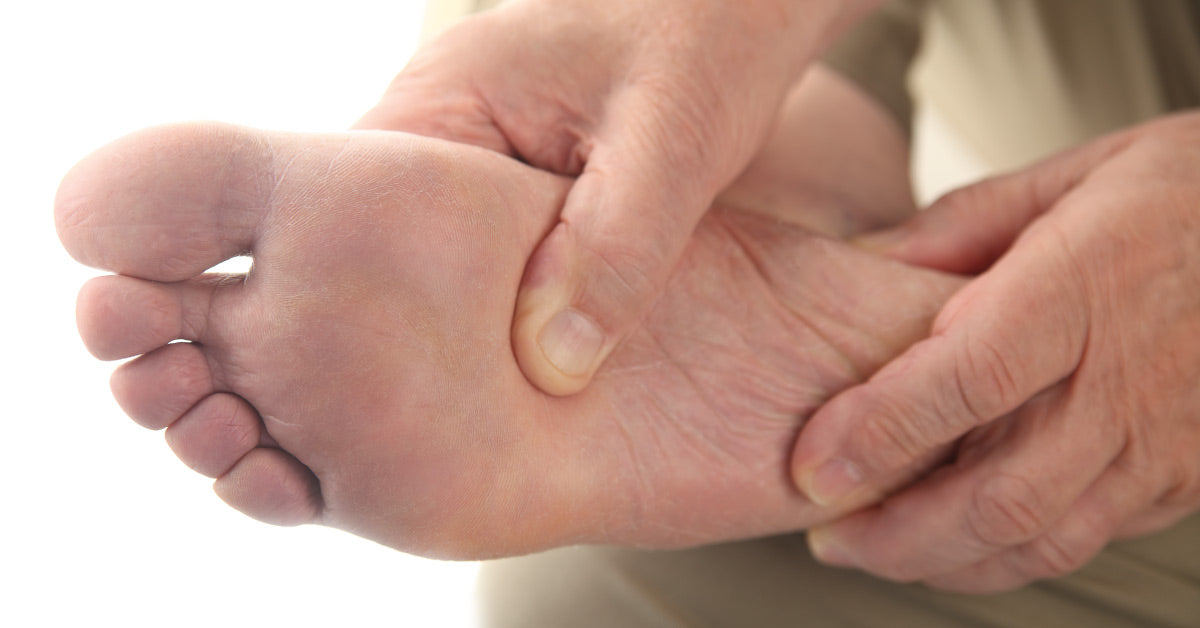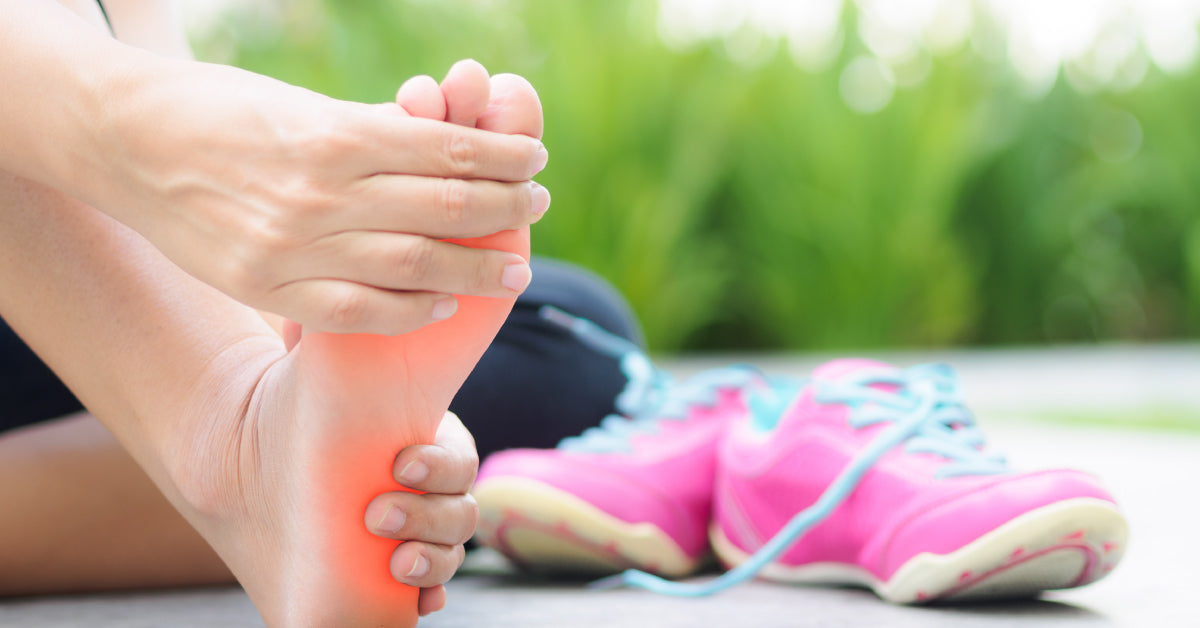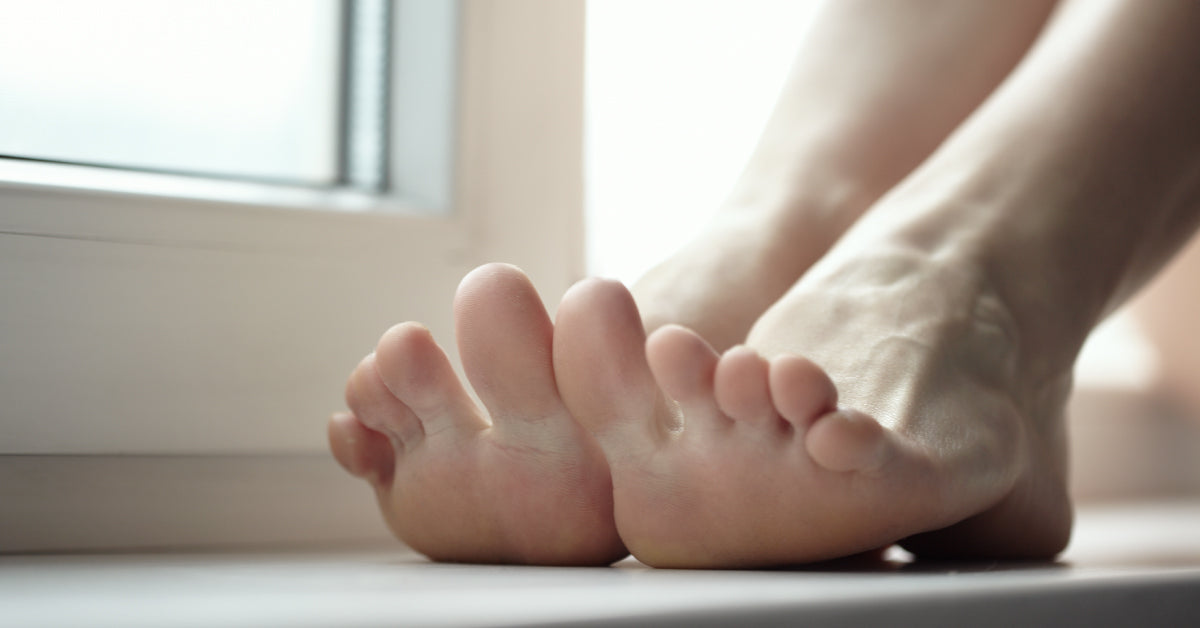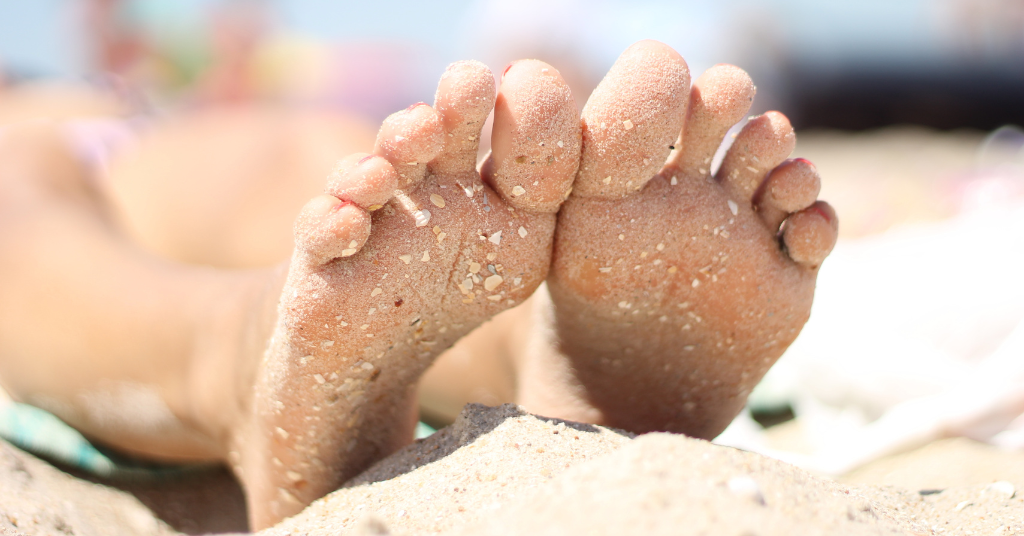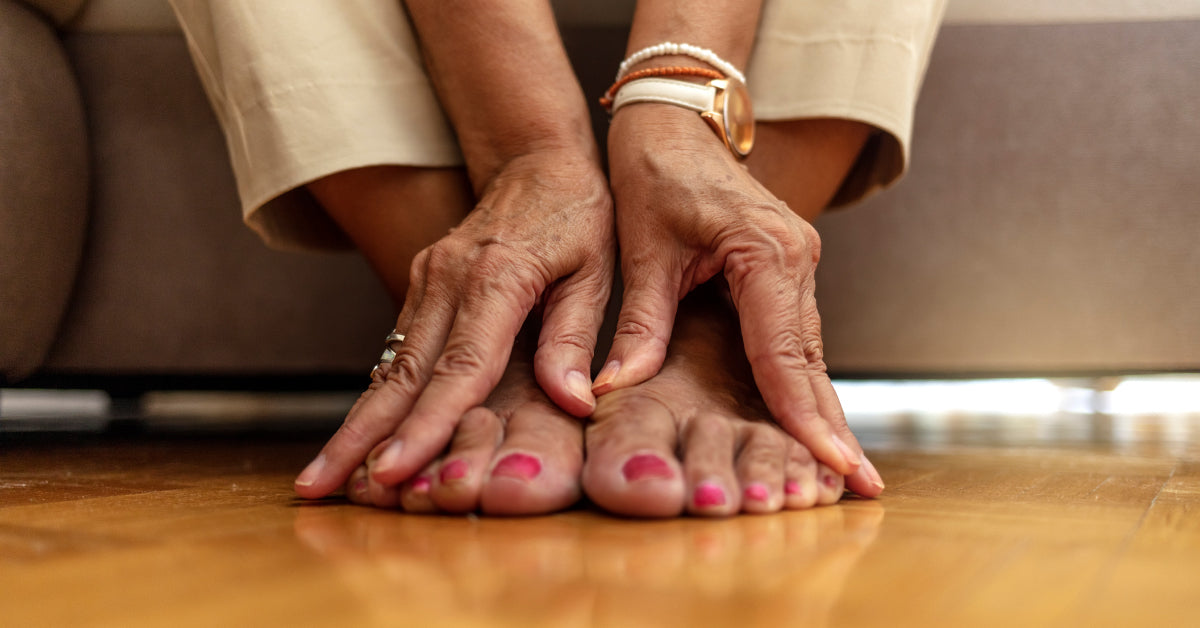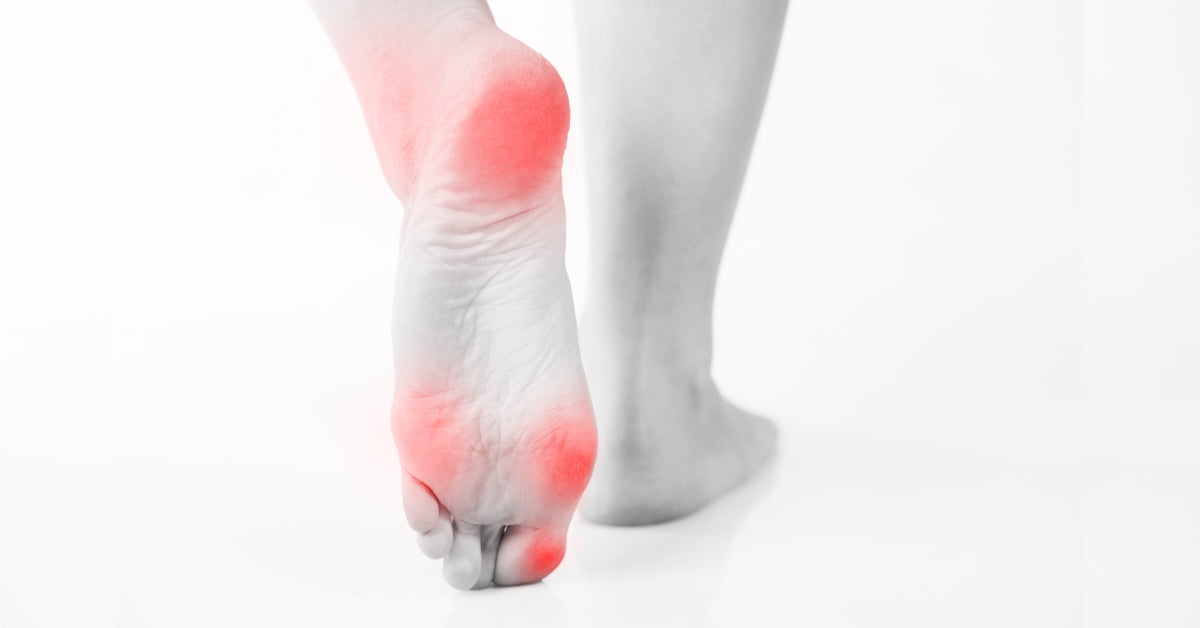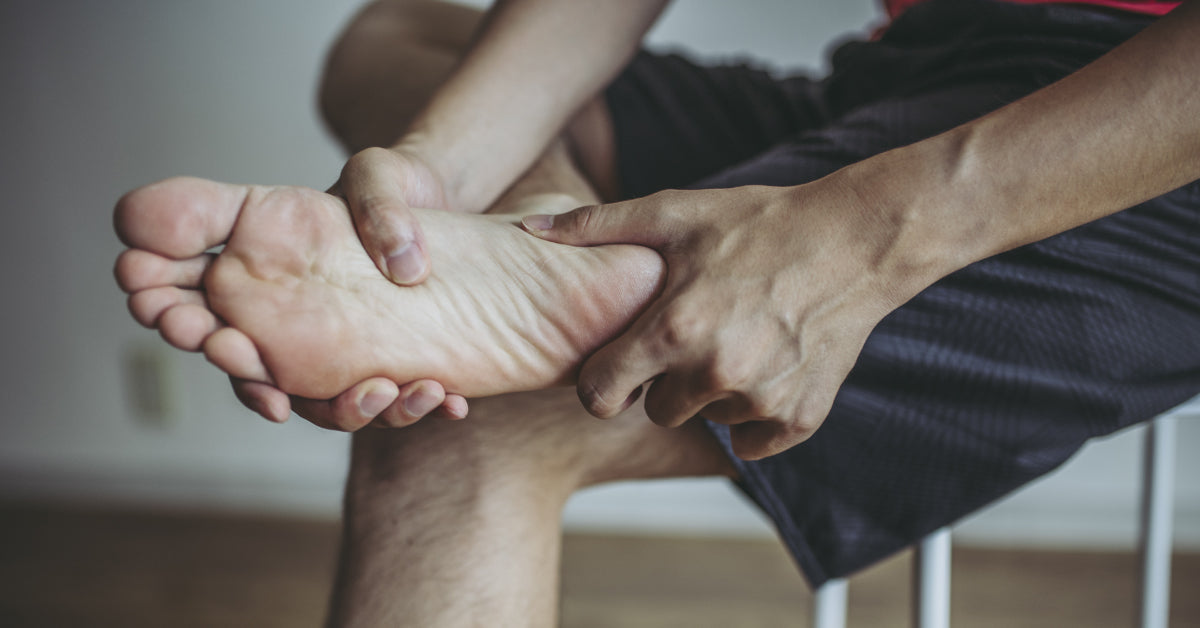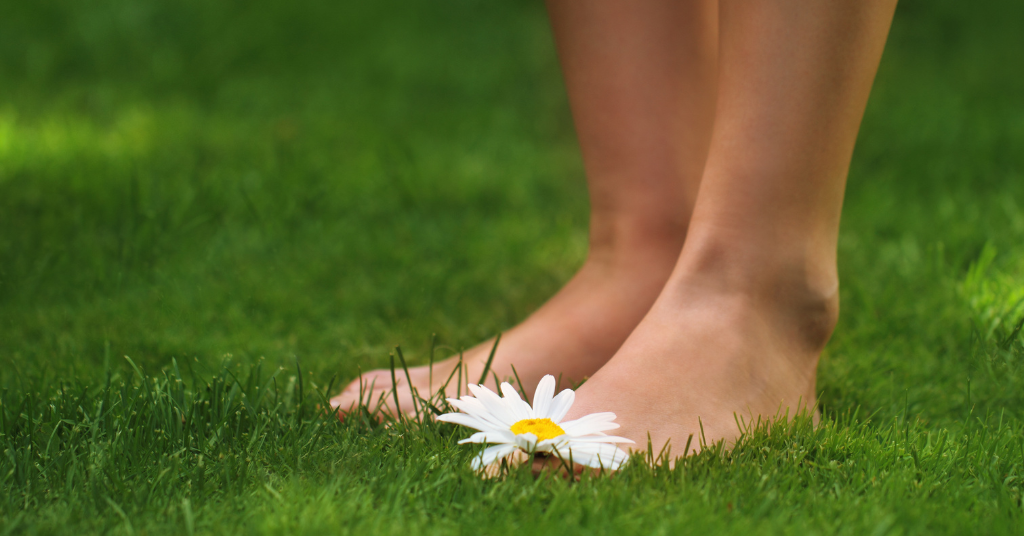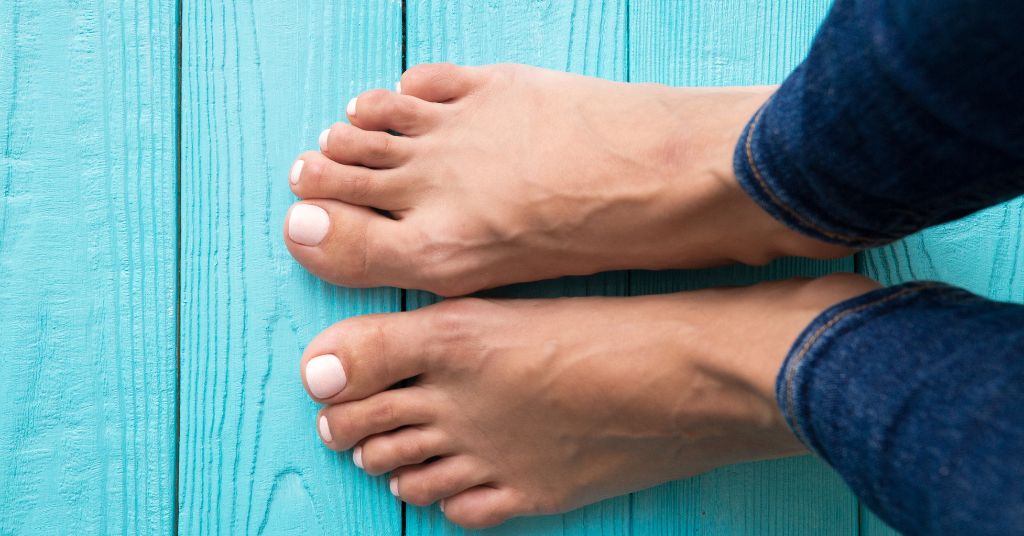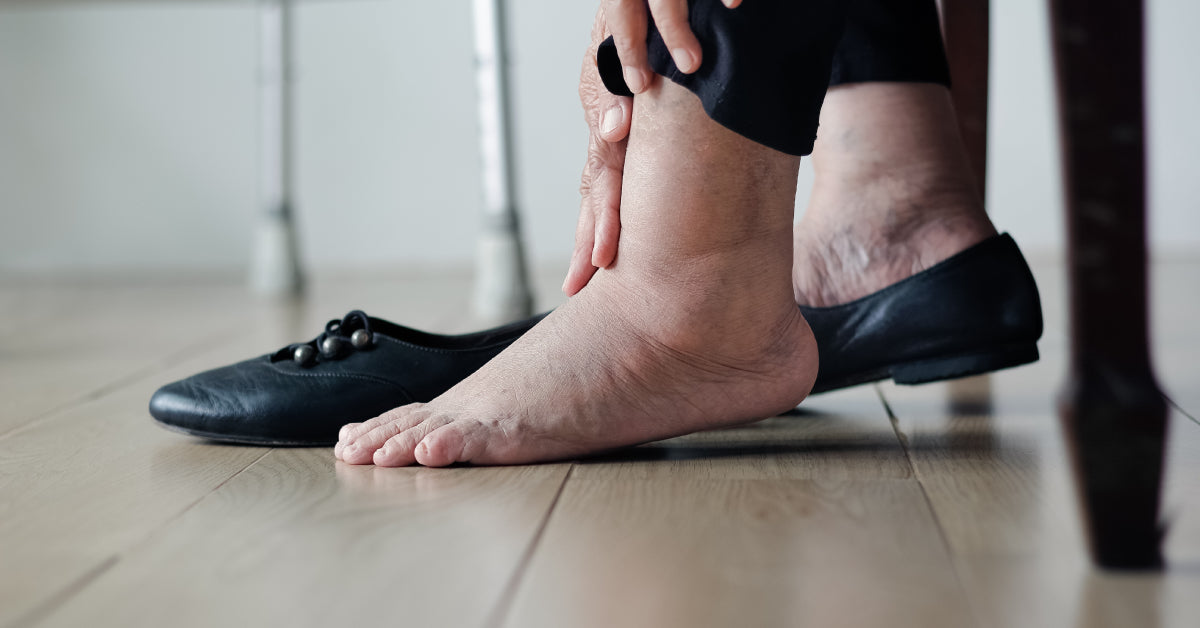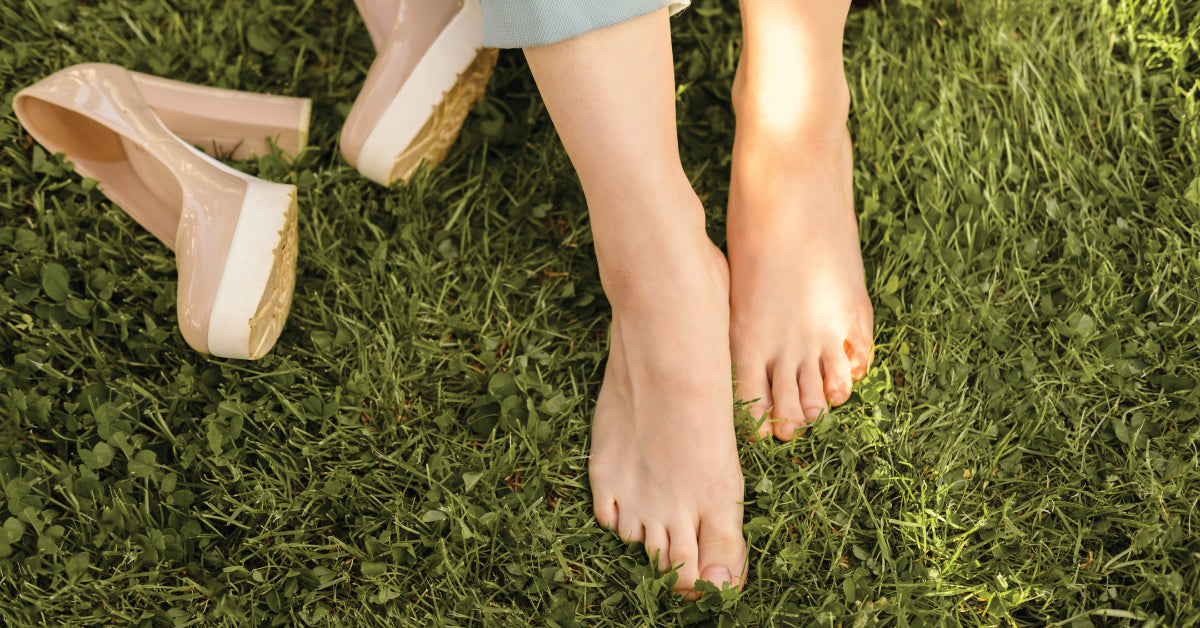Burning Feet – by Freda Coetzee – May 16, 2025
Burning Feet: Causes and Treatment
Understand the causes of burning feet and get the right treatment
Pain from burning feet can range from mild to excruciating. The most common cause of this pain is nerve damage often brought about by diabetes.
There are various treatments as there are numerous causes of burning feet.
Causes of burning feet
1. Diabetic neuropathy
Diabetes is caused by high blood sugar levels. When you have high blood sugar levels it can slowly start to damage blood vessels and nerves. Damaged nerve fibres can misfire – they can send messages of intense pain to the brain even if there is no wound. People with diabetic neuropathy can experience tingling or a feeling of numbness in their feet. Feet can also become overly sensitive – where the slightest touch can feel excruciating.
The most common type of neuropathy among diabetes is peripheral neuropathy (your peripheral nervous system connects the nerves from your brain and spinal cord, or central nervous system, to the rest of your body). About one-third to one-half of people with diabetes have peripheral neuropathy, according to the National Institute of Diabetes and Digestive and Kidney Diseases. The most common areas affected by peripheral neuropathy are the legs and feet but your arms and hands can also be affected.
Additional symptoms of peripheral neuropathy include:
Numbness or tingling in your hands or feet
A feeling like you’re wearing a tight sock
Sharp, stabbing pains
Weakness or heavy feeling in your legs or arms
Excessive sweating
2. Small fibre neuropathy
Small fibre neuropathy can cause pain in feet and a burning sensation. Myelin sheath is a protective layer of fat and protein that wraps around your nerves. When this layer is damaged it leads to small fibre neuropathy.
3. Alcoholic neuropathy
Your peripheral nerves can be damaged by drinking too much alcohol. You will start feeling a tingling sensation and pain in your limbs. Other symptoms include muscle weakness, being overly sensitive to pain and problems with gait.
4. Charcot-Marie-Tooth disease (CMT)
Charcot-Marie-Tooth disease (CMT) is a hereditary disease that damages the nerves that control muscles. According to the National Institute of Neurological Disorders and Stroke, CMT is one of the most common inherited neurological disorders.
Symptoms of CMT often occur in adolescence, but they can appear as late as mid-adulthood. Some of the onset symptoms include difficulty walking and running. People suffering form CMT might find themselves stumbling around and falling. Symptoms will get worse over time. CMT causes weakness or paralysis in the feet and hands. Muscles will start wasting away and there will be a loss of sensation in the arms and legs. Some patients experience muscle pains, cramping and stiff joints.
5. Complex regional pain syndrome (CRPS)
Complex regional pain syndrome (CRPS) happens when you experience intense, prolonged pain usually after an injury to an arm or a leg. Symptoms start to show about a month after the injury. People experience tingling and burning pain. They also show a hypersensitivity to a pain trigger. Sometimes changes in skin colour and texture can also be observed.
6. Erythromelalgia
Erythromelalgia is a rare skin disease. People experience flare-ups of redness, burning and pain in feet, hands, arms or legs. These flare-ups are caused by an increase in body temperature. Exercising, eating spicy food, wearing warm clothing and being exposed to warm weather are all possible triggers.
7. Vitamin B deficiency
A lack of vitamin B, especially among older people, can cause nerve damage resulting in muscle coordination problems and a sensation of burning feet. These problems arise from deficiencies in vitamin B-12, vitamin B-6 and vitamin B-9 (folate).
8. Hypothyroidism
An underactive thyroid cause hormonal imbalances and this may result in an array of health complications – nerve damage being one of them. While peripheral neuropathy is common among people with diabetes, it may also be a result of an underactive thyroid.
9. Infectious diseases
Some diseases like Lyme disease, HIV, syphilis and shingles affect your nerves and can cause a burning sensation in your feet.
10. Athlete’s foot
Athlete’s foot — also called tinea pedis — is a contagious fungal infection that affects the skin on the feet. Most people experience itching between their toes and on the soles of their feet. Other symptoms include blisters on the feet, dry skin on the sides and soles of the feet and cracking and peeling skin.
11. Kidney disease
One of the complications of kidney disease is peripheral neuropathy which causes a sensation of burning in the feet. About 10% of people with kidney disease experience burning foot pain.
12. Peripheral arterial disease (PAD)
Peripheral arterial disease (PAD) is common among people with diabetes. This disease causes blood vessels to narrow. Because of poor blood circulation, PAD causes numbness, tingling, or a feeling of pins and needles in your lower legs or feet. Pain in the feet often occurs when walking or exercising.
13. Tarsal tunnel syndrome
If the nerve that runs from your ankle to your foot is repeatedly squeezed it could get damaged and this causes tarsal tunnel syndrome. The repeated pressure on the nerve is usually because of swelling or injury and results in a sharp, shooting, or radiating pain in the foot.
14. Toxin Exposure
Extended exposure to harmful chemicals and heavy metals can lead to peripheral neuropathy . Also be on the lookout for medication that causes damage to your nerves. Some medications for HIV and seizures can damage your nerves.
15. Chemotherapy
Its not only HIV and seizure medication that can harm your nerves, chemicals that is used to kill cancer cells can also cause peripheral neuropathy.
Treatment options for burning feet
There are copious treatment options for burning feet as there are multiple causes.
Sometimes treatment can be uncomplicated
If you have a vitamin deficiency, you can take a supplement orally or get an injection to raise your levels of vitamin B.
Nerve damage because of alcoholism can be curbed if you stop drinking and follow a balanced diet. In some cases, the damage can be reversed.
Dialysis may be necessary to eliminate toxins among people with kidney disease.
Thyroid supplements can reverse neuropathy as well as burning feet symptoms among people with hypothyroidism.
Athletes foot can by treated with antifungal medication.
If you have diabetes, you can manage the symptoms of peripheral neuropathy by controlling your blood sugar levels. You can do so through medication and changing your diet.
There are various medications that your doctor can prescribe to help with nerve pain.
In cases of extreme pain, some doctors recommend nerve stimulation like:
Electrical nerve stimulation
Magnetic therapy
Laser therapy
Light therapy
Home remedies
For relief of the sensation of burning feet you can:
Soak your feet in cold water. However, cold water might damage your skin if you have erythromelalgia.
Add turmeric to your diet. Turmeric contains curcumin which may help relieve nerve pain.
Massage your feet to improve blood flow circulation.
Takeaway
The sensation of burning feet can be caused by various health problems. Some treatment, like athletes’ foot, can be straightforward. Most cases of burning feet can be attributed to nerve damage and in a significant amount of cases the damage is caused by diabetes. If you have diabetes, it is important to manage your blood sugar levels. You can also take medication specifically for the pain and practice home remedies to relief the pain caused by burning feet.
Understand the causes of burning feet and get the right treatment
Pain from burning feet can range from mild to excruciating. The most common cause of this pain is nerve damage often brought about by diabetes.
There are various treatments as there are numerous causes of burning feet.
Causes of burning feet
1. Diabetic neuropathy
Diabetes is caused by high blood sugar levels. When you have high blood sugar levels it can slowly start to damage blood vessels and nerves. Damaged nerve fibres can misfire – they can send messages of intense pain to the brain even if there is no wound. People with diabetic neuropathy can experience tingling or a feeling of numbness in their feet. Feet can also become overly sensitive – where the slightest touch can feel excruciating.
The most common type of neuropathy among diabetes is peripheral neuropathy (your peripheral nervous system connects the nerves from your brain and spinal cord, or central nervous system, to the rest of your body). About one-third to one-half of people with diabetes have peripheral neuropathy, according to the National Institute of Diabetes and Digestive and Kidney Diseases. The most common areas affected by peripheral neuropathy are the legs and feet but your arms and hands can also be affected.
Additional symptoms of peripheral neuropathy include:
Numbness or tingling in your hands or feet
A feeling like you’re wearing a tight sock
Sharp, stabbing pains
Weakness or heavy feeling in your legs or arms
Excessive sweating
2. Small fibre neuropathy
Small fibre neuropathy can cause pain in feet and a burning sensation. Myelin sheath is a protective layer of fat and protein that wraps around your nerves. When this layer is damaged it leads to small fibre neuropathy.
3. Alcoholic neuropathy
Your peripheral nerves can be damaged by drinking too much alcohol. You will start feeling a tingling sensation and pain in your limbs. Other symptoms include muscle weakness, being overly sensitive to pain and problems with gait.
4. Charcot-Marie-Tooth disease (CMT)
Charcot-Marie-Tooth disease (CMT) is a hereditary disease that damages the nerves that control muscles. According to the National Institute of Neurological Disorders and Stroke, CMT is one of the most common inherited neurological disorders.
Symptoms of CMT often occur in adolescence, but they can appear as late as mid-adulthood. Some of the onset symptoms include difficulty walking and running. People suffering form CMT might find themselves stumbling around and falling. Symptoms will get worse over time. CMT causes weakness or paralysis in the feet and hands. Muscles will start wasting away and there will be a loss of sensation in the arms and legs. Some patients experience muscle pains, cramping and stiff joints.
5. Complex regional pain syndrome (CRPS)
Complex regional pain syndrome (CRPS) happens when you experience intense, prolonged pain usually after an injury to an arm or a leg. Symptoms start to show about a month after the injury. People experience tingling and burning pain. They also show a hypersensitivity to a pain trigger. Sometimes changes in skin colour and texture can also be observed.
6. Erythromelalgia
Erythromelalgia is a rare skin disease. People experience flare-ups of redness, burning and pain in feet, hands, arms or legs. These flare-ups are caused by an increase in body temperature. Exercising, eating spicy food, wearing warm clothing and being exposed to warm weather are all possible triggers.
7. Vitamin B deficiency
A lack of vitamin B, especially among older people, can cause nerve damage resulting in muscle coordination problems and a sensation of burning feet. These problems arise from deficiencies in vitamin B-12, vitamin B-6 and vitamin B-9 (folate).
8. Hypothyroidism
An underactive thyroid cause hormonal imbalances and this may result in an array of health complications – nerve damage being one of them. While peripheral neuropathy is common among people with diabetes, it may also be a result of an underactive thyroid.
9. Infectious diseases
Some diseases like Lyme disease, HIV, syphilis and shingles affect your nerves and can cause a burning sensation in your feet.
10. Athlete’s foot
Athlete’s foot — also called tinea pedis — is a contagious fungal infection that affects the skin on the feet. Most people experience itching between their toes and on the soles of their feet. Other symptoms include blisters on the feet, dry skin on the sides and soles of the feet and cracking and peeling skin.
11. Kidney disease
One of the complications of kidney disease is peripheral neuropathy which causes a sensation of burning in the feet. About 10% of people with kidney disease experience burning foot pain.
12. Peripheral arterial disease (PAD)
Peripheral arterial disease (PAD) is common among people with diabetes. This disease causes blood vessels to narrow. Because of poor blood circulation, PAD causes numbness, tingling, or a feeling of pins and needles in your lower legs or feet. Pain in the feet often occurs when walking or exercising.
13. Tarsal tunnel syndrome
If the nerve that runs from your ankle to your foot is repeatedly squeezed it could get damaged and this causes tarsal tunnel syndrome. The repeated pressure on the nerve is usually because of swelling or injury and results in a sharp, shooting, or radiating pain in the foot.
14. Toxin Exposure
Extended exposure to harmful chemicals and heavy metals can lead to peripheral neuropathy . Also be on the lookout for medication that causes damage to your nerves. Some medications for HIV and seizures can damage your nerves.
15. Chemotherapy
Its not only HIV and seizure medication that can harm your nerves, chemicals that is used to kill cancer cells can also cause peripheral neuropathy.
Treatment options for burning feet
There are copious treatment options for burning feet as there are multiple causes.
Sometimes treatment can be uncomplicated
If you have a vitamin deficiency, you can take a supplement orally or get an injection to raise your levels of vitamin B.
Nerve damage because of alcoholism can be curbed if you stop drinking and follow a balanced diet. In some cases, the damage can be reversed.
Dialysis may be necessary to eliminate toxins among people with kidney disease.
Thyroid supplements can reverse neuropathy as well as burning feet symptoms among people with hypothyroidism.
Athletes foot can by treated with antifungal medication.
If you have diabetes, you can manage the symptoms of peripheral neuropathy by controlling your blood sugar levels. You can do so through medication and changing your diet.
There are various medications that your doctor can prescribe to help with nerve pain.
In cases of extreme pain, some doctors recommend nerve stimulation like:
Electrical nerve stimulation
Magnetic therapy
Laser therapy
Light therapy
Home remedies
For relief of the sensation of burning feet you can:
Soak your feet in cold water. However, cold water might damage your skin if you have erythromelalgia.
Add turmeric to your diet. Turmeric contains curcumin which may help relieve nerve pain.
Massage your feet to improve blood flow circulation.
Takeaway
The sensation of burning feet can be caused by various health problems. Some treatment, like athletes’ foot, can be straightforward. Most cases of burning feet can be attributed to nerve damage and in a significant amount of cases the damage is caused by diabetes. If you have diabetes, it is important to manage your blood sugar levels. You can also take medication specifically for the pain and practice home remedies to relief the pain caused by burning feet.
Understand the causes of burning feet and get the right treatment
Pain from burning feet can range from mild to excruciating. The most common cause of this pain is nerve damage often brought about by diabetes.
There are various treatments as there are numerous causes of burning feet.
Causes of burning feet
1. Diabetic neuropathy
Diabetes is caused by high blood sugar levels. When you have high blood sugar levels it can slowly start to damage blood vessels and nerves. Damaged nerve fibres can misfire – they can send messages of intense pain to the brain even if there is no wound. People with diabetic neuropathy can experience tingling or a feeling of numbness in their feet. Feet can also become overly sensitive – where the slightest touch can feel excruciating.
The most common type of neuropathy among diabetes is peripheral neuropathy (your peripheral nervous system connects the nerves from your brain and spinal cord, or central nervous system, to the rest of your body). About one-third to one-half of people with diabetes have peripheral neuropathy, according to the National Institute of Diabetes and Digestive and Kidney Diseases. The most common areas affected by peripheral neuropathy are the legs and feet but your arms and hands can also be affected.
Additional symptoms of peripheral neuropathy include:
Numbness or tingling in your hands or feet
A feeling like you’re wearing a tight sock
Sharp, stabbing pains
Weakness or heavy feeling in your legs or arms
Excessive sweating
2. Small fibre neuropathy
Small fibre neuropathy can cause pain in feet and a burning sensation. Myelin sheath is a protective layer of fat and protein that wraps around your nerves. When this layer is damaged it leads to small fibre neuropathy.
3. Alcoholic neuropathy
Your peripheral nerves can be damaged by drinking too much alcohol. You will start feeling a tingling sensation and pain in your limbs. Other symptoms include muscle weakness, being overly sensitive to pain and problems with gait.
4. Charcot-Marie-Tooth disease (CMT)
Charcot-Marie-Tooth disease (CMT) is a hereditary disease that damages the nerves that control muscles. According to the National Institute of Neurological Disorders and Stroke, CMT is one of the most common inherited neurological disorders.
Symptoms of CMT often occur in adolescence, but they can appear as late as mid-adulthood. Some of the onset symptoms include difficulty walking and running. People suffering form CMT might find themselves stumbling around and falling. Symptoms will get worse over time. CMT causes weakness or paralysis in the feet and hands. Muscles will start wasting away and there will be a loss of sensation in the arms and legs. Some patients experience muscle pains, cramping and stiff joints.
5. Complex regional pain syndrome (CRPS)
Complex regional pain syndrome (CRPS) happens when you experience intense, prolonged pain usually after an injury to an arm or a leg. Symptoms start to show about a month after the injury. People experience tingling and burning pain. They also show a hypersensitivity to a pain trigger. Sometimes changes in skin colour and texture can also be observed.
6. Erythromelalgia
Erythromelalgia is a rare skin disease. People experience flare-ups of redness, burning and pain in feet, hands, arms or legs. These flare-ups are caused by an increase in body temperature. Exercising, eating spicy food, wearing warm clothing and being exposed to warm weather are all possible triggers.
7. Vitamin B deficiency
A lack of vitamin B, especially among older people, can cause nerve damage resulting in muscle coordination problems and a sensation of burning feet. These problems arise from deficiencies in vitamin B-12, vitamin B-6 and vitamin B-9 (folate).
8. Hypothyroidism
An underactive thyroid cause hormonal imbalances and this may result in an array of health complications – nerve damage being one of them. While peripheral neuropathy is common among people with diabetes, it may also be a result of an underactive thyroid.
9. Infectious diseases
Some diseases like Lyme disease, HIV, syphilis and shingles affect your nerves and can cause a burning sensation in your feet.
10. Athlete’s foot
Athlete’s foot — also called tinea pedis — is a contagious fungal infection that affects the skin on the feet. Most people experience itching between their toes and on the soles of their feet. Other symptoms include blisters on the feet, dry skin on the sides and soles of the feet and cracking and peeling skin.
11. Kidney disease
One of the complications of kidney disease is peripheral neuropathy which causes a sensation of burning in the feet. About 10% of people with kidney disease experience burning foot pain.
12. Peripheral arterial disease (PAD)
Peripheral arterial disease (PAD) is common among people with diabetes. This disease causes blood vessels to narrow. Because of poor blood circulation, PAD causes numbness, tingling, or a feeling of pins and needles in your lower legs or feet. Pain in the feet often occurs when walking or exercising.
13. Tarsal tunnel syndrome
If the nerve that runs from your ankle to your foot is repeatedly squeezed it could get damaged and this causes tarsal tunnel syndrome. The repeated pressure on the nerve is usually because of swelling or injury and results in a sharp, shooting, or radiating pain in the foot.
14. Toxin Exposure
Extended exposure to harmful chemicals and heavy metals can lead to peripheral neuropathy . Also be on the lookout for medication that causes damage to your nerves. Some medications for HIV and seizures can damage your nerves.
15. Chemotherapy
Its not only HIV and seizure medication that can harm your nerves, chemicals that is used to kill cancer cells can also cause peripheral neuropathy.
Treatment options for burning feet
There are copious treatment options for burning feet as there are multiple causes.
Sometimes treatment can be uncomplicated
If you have a vitamin deficiency, you can take a supplement orally or get an injection to raise your levels of vitamin B.
Nerve damage because of alcoholism can be curbed if you stop drinking and follow a balanced diet. In some cases, the damage can be reversed.
Dialysis may be necessary to eliminate toxins among people with kidney disease.
Thyroid supplements can reverse neuropathy as well as burning feet symptoms among people with hypothyroidism.
Athletes foot can by treated with antifungal medication.
If you have diabetes, you can manage the symptoms of peripheral neuropathy by controlling your blood sugar levels. You can do so through medication and changing your diet.
There are various medications that your doctor can prescribe to help with nerve pain.
In cases of extreme pain, some doctors recommend nerve stimulation like:
Electrical nerve stimulation
Magnetic therapy
Laser therapy
Light therapy
Home remedies
For relief of the sensation of burning feet you can:
Soak your feet in cold water. However, cold water might damage your skin if you have erythromelalgia.
Add turmeric to your diet. Turmeric contains curcumin which may help relieve nerve pain.
Massage your feet to improve blood flow circulation.
Takeaway
The sensation of burning feet can be caused by various health problems. Some treatment, like athletes’ foot, can be straightforward. Most cases of burning feet can be attributed to nerve damage and in a significant amount of cases the damage is caused by diabetes. If you have diabetes, it is important to manage your blood sugar levels. You can also take medication specifically for the pain and practice home remedies to relief the pain caused by burning feet.
Understand the causes of burning feet and get the right treatment
Pain from burning feet can range from mild to excruciating. The most common cause of this pain is nerve damage often brought about by diabetes.
There are various treatments as there are numerous causes of burning feet.
Causes of burning feet
1. Diabetic neuropathy
Diabetes is caused by high blood sugar levels. When you have high blood sugar levels it can slowly start to damage blood vessels and nerves. Damaged nerve fibres can misfire – they can send messages of intense pain to the brain even if there is no wound. People with diabetic neuropathy can experience tingling or a feeling of numbness in their feet. Feet can also become overly sensitive – where the slightest touch can feel excruciating.
The most common type of neuropathy among diabetes is peripheral neuropathy (your peripheral nervous system connects the nerves from your brain and spinal cord, or central nervous system, to the rest of your body). About one-third to one-half of people with diabetes have peripheral neuropathy, according to the National Institute of Diabetes and Digestive and Kidney Diseases. The most common areas affected by peripheral neuropathy are the legs and feet but your arms and hands can also be affected.
Additional symptoms of peripheral neuropathy include:
Numbness or tingling in your hands or feet
A feeling like you’re wearing a tight sock
Sharp, stabbing pains
Weakness or heavy feeling in your legs or arms
Excessive sweating
2. Small fibre neuropathy
Small fibre neuropathy can cause pain in feet and a burning sensation. Myelin sheath is a protective layer of fat and protein that wraps around your nerves. When this layer is damaged it leads to small fibre neuropathy.
3. Alcoholic neuropathy
Your peripheral nerves can be damaged by drinking too much alcohol. You will start feeling a tingling sensation and pain in your limbs. Other symptoms include muscle weakness, being overly sensitive to pain and problems with gait.
4. Charcot-Marie-Tooth disease (CMT)
Charcot-Marie-Tooth disease (CMT) is a hereditary disease that damages the nerves that control muscles. According to the National Institute of Neurological Disorders and Stroke, CMT is one of the most common inherited neurological disorders.
Symptoms of CMT often occur in adolescence, but they can appear as late as mid-adulthood. Some of the onset symptoms include difficulty walking and running. People suffering form CMT might find themselves stumbling around and falling. Symptoms will get worse over time. CMT causes weakness or paralysis in the feet and hands. Muscles will start wasting away and there will be a loss of sensation in the arms and legs. Some patients experience muscle pains, cramping and stiff joints.
5. Complex regional pain syndrome (CRPS)
Complex regional pain syndrome (CRPS) happens when you experience intense, prolonged pain usually after an injury to an arm or a leg. Symptoms start to show about a month after the injury. People experience tingling and burning pain. They also show a hypersensitivity to a pain trigger. Sometimes changes in skin colour and texture can also be observed.
6. Erythromelalgia
Erythromelalgia is a rare skin disease. People experience flare-ups of redness, burning and pain in feet, hands, arms or legs. These flare-ups are caused by an increase in body temperature. Exercising, eating spicy food, wearing warm clothing and being exposed to warm weather are all possible triggers.
7. Vitamin B deficiency
A lack of vitamin B, especially among older people, can cause nerve damage resulting in muscle coordination problems and a sensation of burning feet. These problems arise from deficiencies in vitamin B-12, vitamin B-6 and vitamin B-9 (folate).
8. Hypothyroidism
An underactive thyroid cause hormonal imbalances and this may result in an array of health complications – nerve damage being one of them. While peripheral neuropathy is common among people with diabetes, it may also be a result of an underactive thyroid.
9. Infectious diseases
Some diseases like Lyme disease, HIV, syphilis and shingles affect your nerves and can cause a burning sensation in your feet.
10. Athlete’s foot
Athlete’s foot — also called tinea pedis — is a contagious fungal infection that affects the skin on the feet. Most people experience itching between their toes and on the soles of their feet. Other symptoms include blisters on the feet, dry skin on the sides and soles of the feet and cracking and peeling skin.
11. Kidney disease
One of the complications of kidney disease is peripheral neuropathy which causes a sensation of burning in the feet. About 10% of people with kidney disease experience burning foot pain.
12. Peripheral arterial disease (PAD)
Peripheral arterial disease (PAD) is common among people with diabetes. This disease causes blood vessels to narrow. Because of poor blood circulation, PAD causes numbness, tingling, or a feeling of pins and needles in your lower legs or feet. Pain in the feet often occurs when walking or exercising.
13. Tarsal tunnel syndrome
If the nerve that runs from your ankle to your foot is repeatedly squeezed it could get damaged and this causes tarsal tunnel syndrome. The repeated pressure on the nerve is usually because of swelling or injury and results in a sharp, shooting, or radiating pain in the foot.
14. Toxin Exposure
Extended exposure to harmful chemicals and heavy metals can lead to peripheral neuropathy . Also be on the lookout for medication that causes damage to your nerves. Some medications for HIV and seizures can damage your nerves.
15. Chemotherapy
Its not only HIV and seizure medication that can harm your nerves, chemicals that is used to kill cancer cells can also cause peripheral neuropathy.
Treatment options for burning feet
There are copious treatment options for burning feet as there are multiple causes.
Sometimes treatment can be uncomplicated
If you have a vitamin deficiency, you can take a supplement orally or get an injection to raise your levels of vitamin B.
Nerve damage because of alcoholism can be curbed if you stop drinking and follow a balanced diet. In some cases, the damage can be reversed.
Dialysis may be necessary to eliminate toxins among people with kidney disease.
Thyroid supplements can reverse neuropathy as well as burning feet symptoms among people with hypothyroidism.
Athletes foot can by treated with antifungal medication.
If you have diabetes, you can manage the symptoms of peripheral neuropathy by controlling your blood sugar levels. You can do so through medication and changing your diet.
There are various medications that your doctor can prescribe to help with nerve pain.
In cases of extreme pain, some doctors recommend nerve stimulation like:
Electrical nerve stimulation
Magnetic therapy
Laser therapy
Light therapy
Home remedies
For relief of the sensation of burning feet you can:
Soak your feet in cold water. However, cold water might damage your skin if you have erythromelalgia.
Add turmeric to your diet. Turmeric contains curcumin which may help relieve nerve pain.
Massage your feet to improve blood flow circulation.
Takeaway
The sensation of burning feet can be caused by various health problems. Some treatment, like athletes’ foot, can be straightforward. Most cases of burning feet can be attributed to nerve damage and in a significant amount of cases the damage is caused by diabetes. If you have diabetes, it is important to manage your blood sugar levels. You can also take medication specifically for the pain and practice home remedies to relief the pain caused by burning feet.
Understand the causes of burning feet and get the right treatment
Pain from burning feet can range from mild to excruciating. The most common cause of this pain is nerve damage often brought about by diabetes.
There are various treatments as there are numerous causes of burning feet.
Causes of burning feet
1. Diabetic neuropathy
Diabetes is caused by high blood sugar levels. When you have high blood sugar levels it can slowly start to damage blood vessels and nerves. Damaged nerve fibres can misfire – they can send messages of intense pain to the brain even if there is no wound. People with diabetic neuropathy can experience tingling or a feeling of numbness in their feet. Feet can also become overly sensitive – where the slightest touch can feel excruciating.
The most common type of neuropathy among diabetes is peripheral neuropathy (your peripheral nervous system connects the nerves from your brain and spinal cord, or central nervous system, to the rest of your body). About one-third to one-half of people with diabetes have peripheral neuropathy, according to the National Institute of Diabetes and Digestive and Kidney Diseases. The most common areas affected by peripheral neuropathy are the legs and feet but your arms and hands can also be affected.
Additional symptoms of peripheral neuropathy include:
Numbness or tingling in your hands or feet
A feeling like you’re wearing a tight sock
Sharp, stabbing pains
Weakness or heavy feeling in your legs or arms
Excessive sweating
2. Small fibre neuropathy
Small fibre neuropathy can cause pain in feet and a burning sensation. Myelin sheath is a protective layer of fat and protein that wraps around your nerves. When this layer is damaged it leads to small fibre neuropathy.
3. Alcoholic neuropathy
Your peripheral nerves can be damaged by drinking too much alcohol. You will start feeling a tingling sensation and pain in your limbs. Other symptoms include muscle weakness, being overly sensitive to pain and problems with gait.
4. Charcot-Marie-Tooth disease (CMT)
Charcot-Marie-Tooth disease (CMT) is a hereditary disease that damages the nerves that control muscles. According to the National Institute of Neurological Disorders and Stroke, CMT is one of the most common inherited neurological disorders.
Symptoms of CMT often occur in adolescence, but they can appear as late as mid-adulthood. Some of the onset symptoms include difficulty walking and running. People suffering form CMT might find themselves stumbling around and falling. Symptoms will get worse over time. CMT causes weakness or paralysis in the feet and hands. Muscles will start wasting away and there will be a loss of sensation in the arms and legs. Some patients experience muscle pains, cramping and stiff joints.
5. Complex regional pain syndrome (CRPS)
Complex regional pain syndrome (CRPS) happens when you experience intense, prolonged pain usually after an injury to an arm or a leg. Symptoms start to show about a month after the injury. People experience tingling and burning pain. They also show a hypersensitivity to a pain trigger. Sometimes changes in skin colour and texture can also be observed.
6. Erythromelalgia
Erythromelalgia is a rare skin disease. People experience flare-ups of redness, burning and pain in feet, hands, arms or legs. These flare-ups are caused by an increase in body temperature. Exercising, eating spicy food, wearing warm clothing and being exposed to warm weather are all possible triggers.
7. Vitamin B deficiency
A lack of vitamin B, especially among older people, can cause nerve damage resulting in muscle coordination problems and a sensation of burning feet. These problems arise from deficiencies in vitamin B-12, vitamin B-6 and vitamin B-9 (folate).
8. Hypothyroidism
An underactive thyroid cause hormonal imbalances and this may result in an array of health complications – nerve damage being one of them. While peripheral neuropathy is common among people with diabetes, it may also be a result of an underactive thyroid.
9. Infectious diseases
Some diseases like Lyme disease, HIV, syphilis and shingles affect your nerves and can cause a burning sensation in your feet.
10. Athlete’s foot
Athlete’s foot — also called tinea pedis — is a contagious fungal infection that affects the skin on the feet. Most people experience itching between their toes and on the soles of their feet. Other symptoms include blisters on the feet, dry skin on the sides and soles of the feet and cracking and peeling skin.
11. Kidney disease
One of the complications of kidney disease is peripheral neuropathy which causes a sensation of burning in the feet. About 10% of people with kidney disease experience burning foot pain.
12. Peripheral arterial disease (PAD)
Peripheral arterial disease (PAD) is common among people with diabetes. This disease causes blood vessels to narrow. Because of poor blood circulation, PAD causes numbness, tingling, or a feeling of pins and needles in your lower legs or feet. Pain in the feet often occurs when walking or exercising.
13. Tarsal tunnel syndrome
If the nerve that runs from your ankle to your foot is repeatedly squeezed it could get damaged and this causes tarsal tunnel syndrome. The repeated pressure on the nerve is usually because of swelling or injury and results in a sharp, shooting, or radiating pain in the foot.
14. Toxin Exposure
Extended exposure to harmful chemicals and heavy metals can lead to peripheral neuropathy . Also be on the lookout for medication that causes damage to your nerves. Some medications for HIV and seizures can damage your nerves.
15. Chemotherapy
Its not only HIV and seizure medication that can harm your nerves, chemicals that is used to kill cancer cells can also cause peripheral neuropathy.
Treatment options for burning feet
There are copious treatment options for burning feet as there are multiple causes.
Sometimes treatment can be uncomplicated
If you have a vitamin deficiency, you can take a supplement orally or get an injection to raise your levels of vitamin B.
Nerve damage because of alcoholism can be curbed if you stop drinking and follow a balanced diet. In some cases, the damage can be reversed.
Dialysis may be necessary to eliminate toxins among people with kidney disease.
Thyroid supplements can reverse neuropathy as well as burning feet symptoms among people with hypothyroidism.
Athletes foot can by treated with antifungal medication.
If you have diabetes, you can manage the symptoms of peripheral neuropathy by controlling your blood sugar levels. You can do so through medication and changing your diet.
There are various medications that your doctor can prescribe to help with nerve pain.
In cases of extreme pain, some doctors recommend nerve stimulation like:
Electrical nerve stimulation
Magnetic therapy
Laser therapy
Light therapy
Home remedies
For relief of the sensation of burning feet you can:
Soak your feet in cold water. However, cold water might damage your skin if you have erythromelalgia.
Add turmeric to your diet. Turmeric contains curcumin which may help relieve nerve pain.
Massage your feet to improve blood flow circulation.
Takeaway
The sensation of burning feet can be caused by various health problems. Some treatment, like athletes’ foot, can be straightforward. Most cases of burning feet can be attributed to nerve damage and in a significant amount of cases the damage is caused by diabetes. If you have diabetes, it is important to manage your blood sugar levels. You can also take medication specifically for the pain and practice home remedies to relief the pain caused by burning feet.




